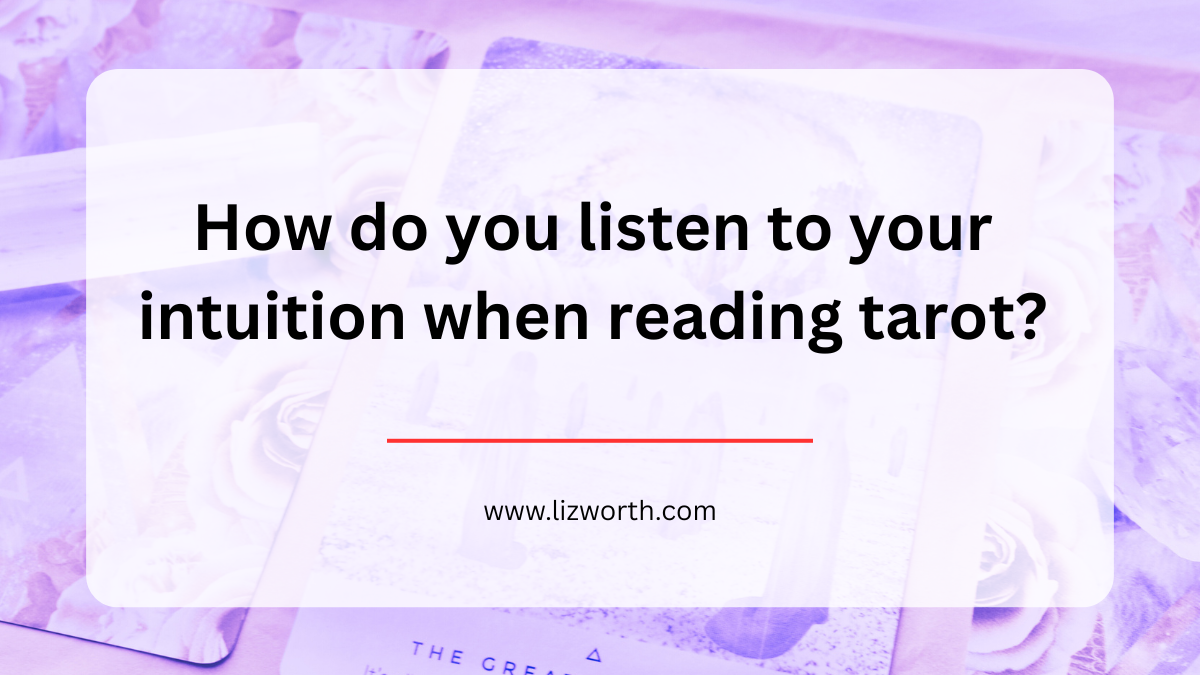How do you listen to your intuition when reading tarot?

Trying to read tarot cards? "Just listen to your intuition," the usual advice goes. But what does that mean, and how do you know it's working?
Tarot and intuition seem to go hand in hand: At least that’s what a lot of us are told when we start working with the cards.
But finding the synergy between an intuitive hit and following the cards as you’ve learned them can be a steep learning curve as a tarot reader.
Maybe you’ve found yourself wondering that very thing: “When should I go with the basic meaning, and when should I go with my first impression instead?”
Sometimes what sits behind this question is the fear of getting a reading wrong by going too off track with your interpretation.
I don’t think there’s a perfect answer or pat solution to this: Sometimes, you just have to be willing to go out on a limb with your interpretation to see if it resonates. Practice, experimentation, and patience go a long way to building your relationship with the cards.
Of course, what works for me may be different for someone else – intuition has its own ways of manifesting within each of us.
That’s why the piece about practice is especially important, because you need to be able to notice patterns in your tarot experiences:
First, there are patterns to pay attention to in the cards you are seeing consistently in regards to the questions you’re asking. Are you starting to notice that certain cards come up more often around certain topics? Is there a common thread you can start to weave between those instances?
Second, there are patterns you might notice in terms of how or what you’re feeling when you’re reading cards – especially when you’re following a hunch.
Want to hear one of the weirdest ways my intuition kicks in?
I start to sweat! Which could make for quite the scene when I used to do a lot of in-person tarot readings. Sometimes, beads of sweat would come rolling down my face as soon as a reading started – no matter what the temperature was outside.
These days, I read mainly on Zoom, which means this physical symptom of mine might not be as obvious to my clients as it was in person😉
But this was something I was able to pinpoint as a consistent pattern over a sustained period of time.
Making tarot part of your regular routine and making the effort to practice reading for yourself and others will help you start to track patterns. Because the only way to see if experiences, or cards, repeat themselves in a predictable manner is to make space for those experiences to consistently show up in your readings.
Another pattern I notice in my readings is that sometimes a word or phrase will seem to be all I can focus on until I say it out loud: It’s as though I’m compelled to offer it up to the querent. And that’s exactly what I do: I preface it by telling my sitter, “I don’t know if this means anything to you, but I keep wanting to say X, Y, and Z…” And I just leave it at that, without attachment as to how it lands with the querent (although it does typically have some significance for them.) Once it’s out of the way, I can go back to focusing on the reading.
But noticing these things requires that we, as readers, are able to stay self-aware within our minds and bodies. Which is why patience during a reading is so important: If you’re rushing through the process, or putting excess pressure on yourself to have an immediate answer for a querent, you might miss the cues that are unfolding within you.
Give yourself the opportunity to take your time with your readings. Concentrate, and take it one step at a time.
And don’t be discouraged if you don’t experience readings exactly as I do, or as others do: I think that intuition can manifest differently depending on the person. And how one reader works through these messages might be different than someone else.
This isn’t a uniform, regimented experience: Tarot reading is an art form in which each reader has to develop their own code of operation.
At the end of the day, tarot takes practice and a willingness to embrace some trial-and-error along the way. If you want to weave more of your intuition into your readings, keep practicing, and don’t be afraid to go out on a limb if you feel like you have a hunch about something.
We can learn just as much from mistakes as we can from bang-on hits. It all adds up in the end.
Until next time,
Liz
Categories: : intuition, learn tarot
 Liz Worth
Liz Worth 